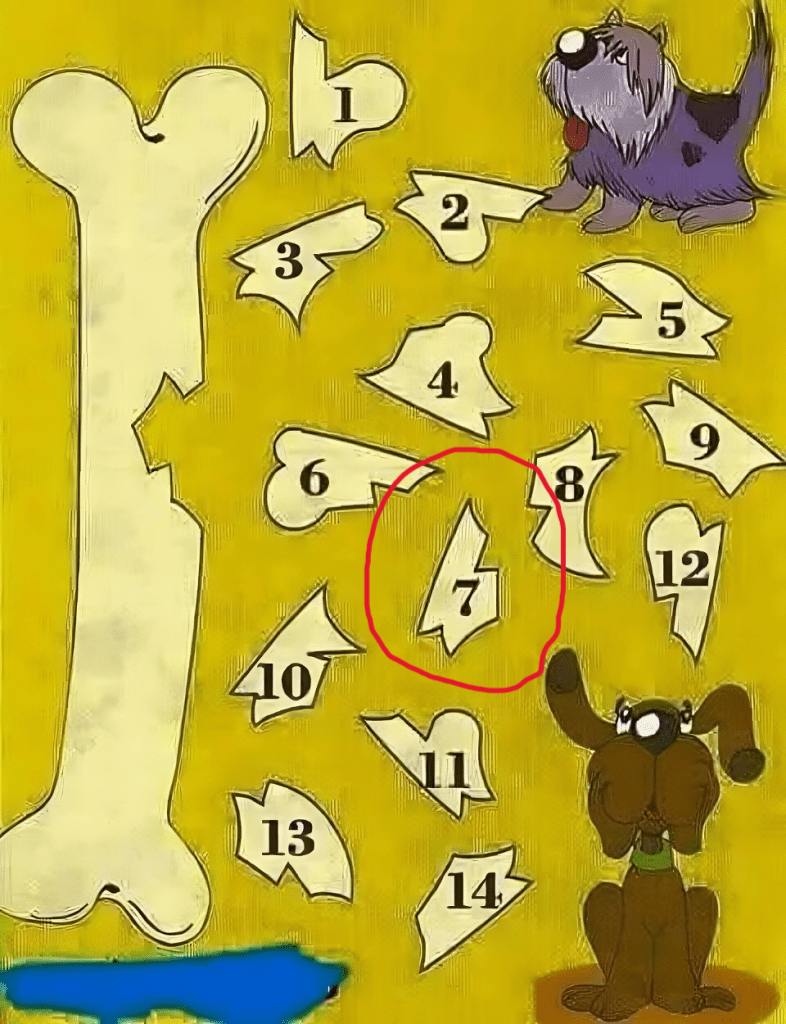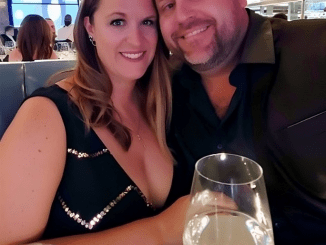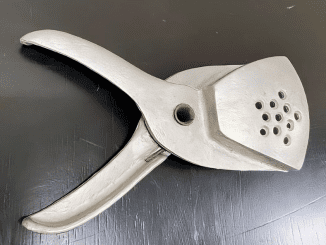Everyone loves a good puzzle, and today, we have a classic one that’s sure to get your mind working. This image shows a large, incomplete bone surrounded by various smaller pieces. Your task? Find out which piece completes the bone. It’s more than just a fun game—this puzzle invites you to engage your critical thinking and exercise your observation skills. Are you ready to dive in?

Puzzles like this one offer much more than just entertainment. They help us improve our focus, attention to detail, and patience. For seniors, engaging in activities like this is a wonderful way to keep the brain active and sharp. The puzzle itself is crafted to be both entertaining and uplifting, encouraging you to reminisce, reflect, and rejoice in your ability to solve problems. Every piece you examine is a step closer to the solution, sparking curiosity and satisfaction along the way.
Let’s face it, when faced with a puzzle, it’s easy to get tripped up by similar-looking pieces. You might find yourself drawn to a piece that seems like it fits perfectly, only to realize that it’s a few millimeters off. Here are some common pitfalls to watch out for when solving puzzles like this:
- Overlooking Small Details: It’s easy to assume a piece fits based on its general shape, but small notches and curves matter. Make sure you’re looking at each piece carefully.
- Rushing the Solution: Sometimes, we’re so eager to solve the puzzle that we don’t fully analyze each option. Take your time with each piece to ensure it’s the right one.
- Assuming Symmetry: Not all puzzle pieces are symmetrical, even if they look that way. Don’t just look at the outside edge of a piece; check how it matches the contours of the empty space.
- Ignoring Orientation: Some pieces look like they fit if you don’t consider orientation. Be sure to rotate each piece and view it from different angles before making a final decision.
Now that we’ve covered some potential challenges, let’s work through the puzzle step-by-step to identify the correct piece.
To solve this puzzle, we’re going to examine each piece in relation to the large bone. Let’s break down the process:
Step 1: Identify the Key Shape
The empty section of the large bone has a distinctive shape, with specific notches and curves. Before testing any pieces, take a moment to visualize how the correct piece would look. This mental image will help you eliminate pieces that clearly don’t fit the general shape.
Step 2: Analyze Each Piece Carefully
Start with piece #1 and work your way through to piece #14. Observe the shape of each piece and rotate it to see how it aligns with the empty area on the large bone.
Step 3: Eliminate Obvious Non-Fits
Some pieces are easy to dismiss because they’re too large, too small, or don’t have the right angles. For instance:
- Pieces like #2, #3, and #6 are too irregularly shaped and don’t align well with the bone.
- Piece #12 has a more pointed edge, which doesn’t match the smoother curves needed for the bone.
Step 4: Test the Promising Pieces
After eliminating the non-fits, you should be left with a handful of pieces that look like they could work. Place each one into the space in your mind or on paper, rotating as needed to match the contour of the empty area.
Step 5: The Right Fit
Through this process, you’ll likely notice that piece #7 is the perfect match. This piece has the exact curvature needed to fill the missing part of the large bone. With the proper rotation, it aligns with the bone perfectly, confirming that it is indeed the correct piece.

Piece #7 stands out because it matches both the size and shape of the missing section. It fills in the space without leaving any gaps, indicating it’s the intended piece for this puzzle. By carefully observing the curves and angles, you’ll see how piece #7 fits seamlessly into the larger bone structure.
Did you solve the puzzle on your first try, or did you have to go through several pieces before finding the right one? Let us know in the comments which piece you thought it might be and how long it took you to solve it. Sharing your experience can encourage others to try the puzzle too!
Puzzles like this one aren’t just fun—they’re a fantastic way to sharpen your mind and improve your problem-solving skills. If you enjoyed solving this puzzle, why not try out a few more? Each challenge you face will strengthen your attention to detail and enhance your logical thinking.
So next time you see a puzzle, dive right in. Every moment spent puzzling is an investment in keeping your mind active and engaged. Plus, the satisfaction of finding the right answer is its own reward!


